
Chazie Baniquid
Technical Content Marketer
5 minutes to read
Stop Off-Topic Submissions in Zapier Using Contextual Spam Detection
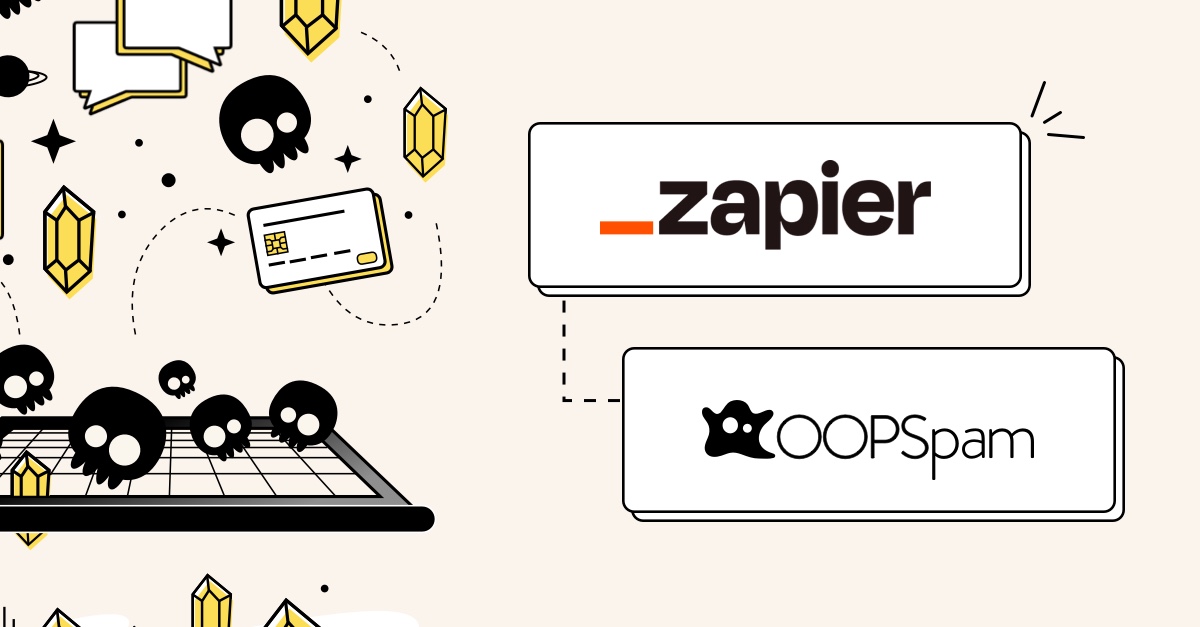
If you use Zapier to automate form submissions, you’ve likely seen off-topic or irrelevant messages get through—even when using traditional spam filters. That’s often because many form builders used with Zapier don’t pass the submitter’s IP address.
To solve this, you can use contextual spam detection. This guide shows you how to use OOPSpam’s Context-Aware Spam Detection to block messages that don’t match the purpose of your form or website.
What Is Contextual Spam Detection?
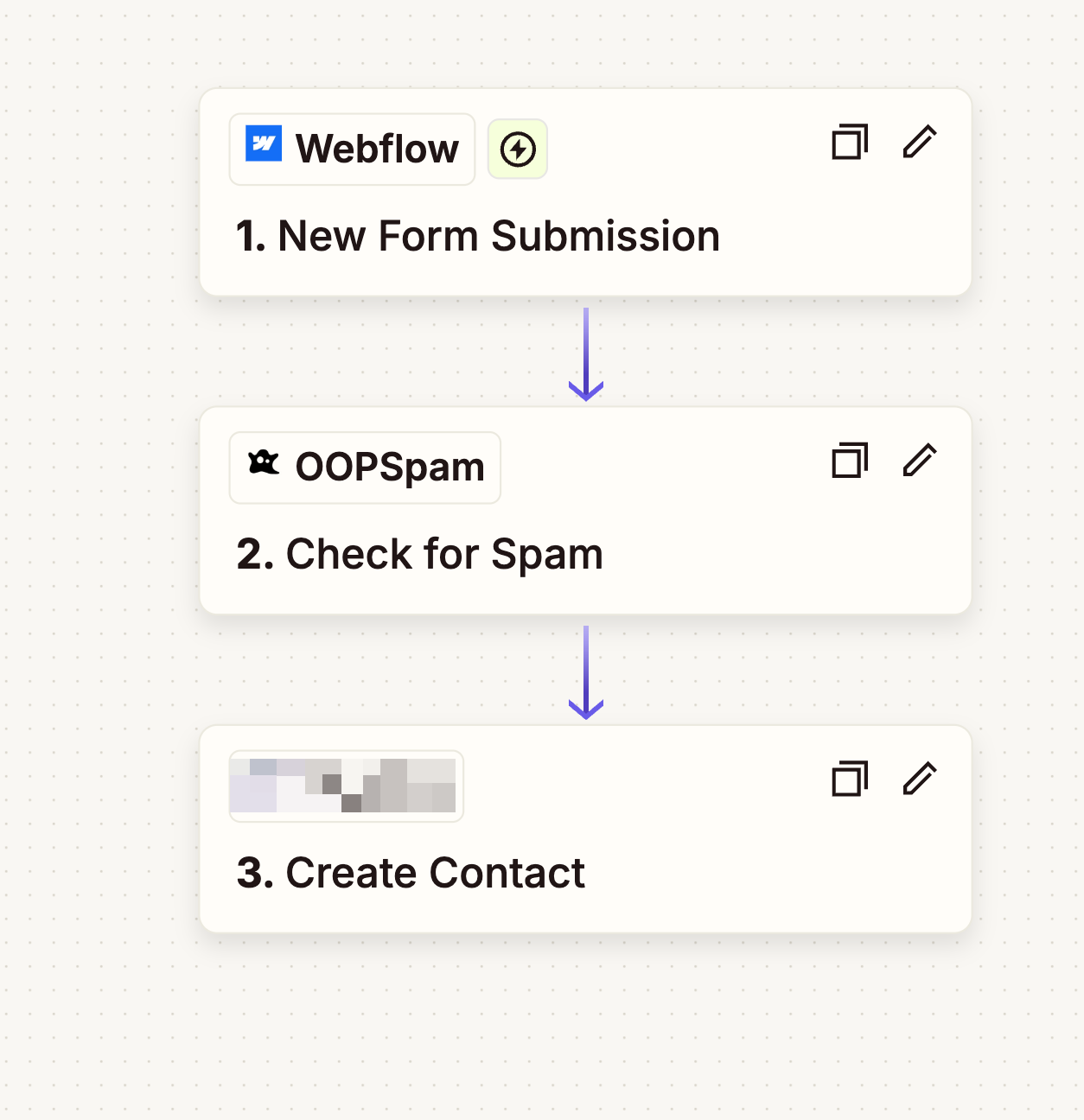
Unlike traditional spam filters that rely on IPs, email reputation, or blacklists, contextual detection evaluates whether the message content is relevant to your website or business.
For example, if someone submits a message about “crypto investment opportunities” on your photography contact form, it’s clearly off-topic. OOPSpam’s contextual detection flags it based on semantic mismatch between the form content and your defined context.
This is especially useful when:
- The only data available is the message (no IP or sender metadata).
- Email looks legitimate but the content isn’t.
- You use tools like Zapier, where personal data isn’t passed through for privacy reasons.
⚡ Contextual Spam Detection doesn’t replace traditional methods—it complements them. It’s an alternative when you can’t rely on email/IP filters alone.
Another common use case is in Zapier, Make, or other automation tools that don’t pass along the form submitter’s IP address. In those cases, content and context alone offer a much stronger way to determine whether a message belongs.
How to Use Contextual Spam Detection in Zapier
Let’s walk through the setup using a Zap that handles form submissions from Jotform.
Step 1: Start With Your Form Trigger
Begin your Zap with a form trigger. In this example, we’ll use Jotform.
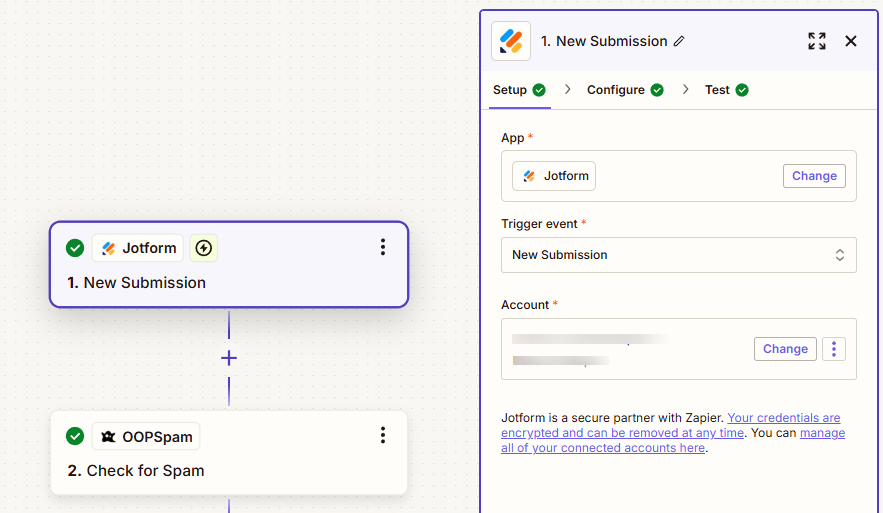
Trigger: New Submission in Jotform
Step 2: Add the OOPSpam Step
Add an action step to your Zap and search for OOPSpam (that’s us! 👋).
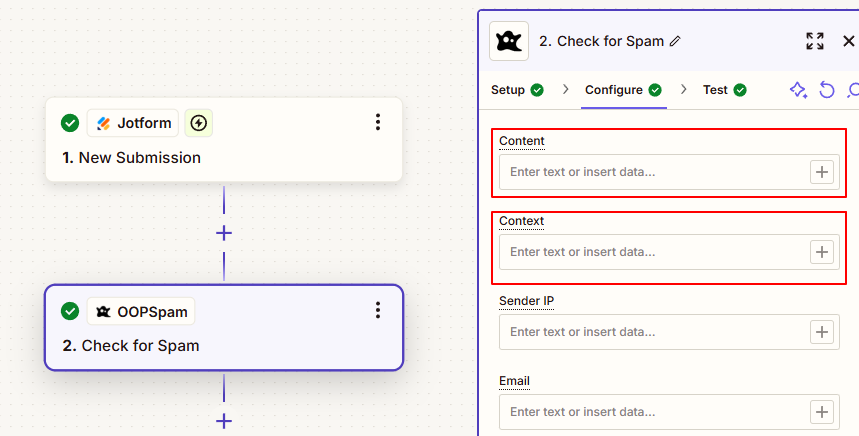
Action: Check for Spam
You’ll see a configuration screen where you can map in your form fields.
Focus on the Context setting here. This is where you define what your website is about so OOPSpam can detect whether the message fits or not.
Just fill in:
- Content: The message submitted
- Context: A sentence about the website’s purpose
There are other advanced options too—like blocking VPNs, limiting by country, or choosing allowed languages—but for contextual detection, the key thing is to make sure your Content and Context fields are mapped.
Note: When Context is provided, IP or email-based spam detection won’t work. The detection relies fully on the content-to-context match.
Step 3: Define Your Context
This is the most important part of using contextual spam detection effectively.
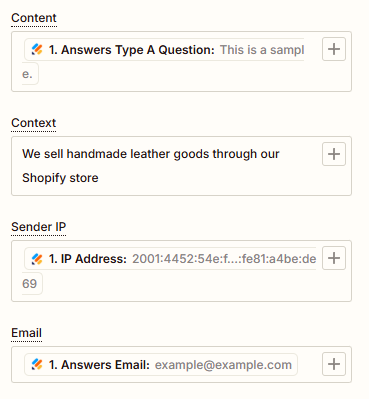
In the Context field, briefly describe your website’s purpose or business is intended for (2-3 sentences max). Think of this as the reference point OOPSpam will use to determine whether the message makes sense.
Examples include:
- “We sell handmade leather goods through our Shopify store.”
- “Our website offers wedding photography services across the UK.”
- “We provide customer support and feedback management tools for e-commerce businesses.”
The more accurate and specific your context is, the better the detection will work at filtering out irrelevant or misleading submissions.
Step 4: Add Filter by Zapier (Optional)
Once OOPSpam returns a result, you can add a Filter step in Zapier to only continue the workflow if the message meets your spam score threshold.
In this case, we’ll filter based on the spam score returned by OOPSpam.
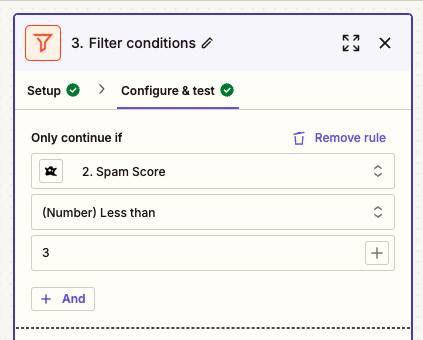
Filter condition: Spam Score is less than 3
In general, scores below 3 are typically not spam. Anything 3 and above is more likely to be spam, so this filter keeps your workflow clean.
Step 5: Proceed With Your Workflow
Now that you’ve filtered out irrelevant content, continue your workflow:
- Send notifications
- Add data to your CRM
- Trigger auto-replies
Only messages that align with your defined context will make it through. Everything else gets quietly blocked.
Supported Platforms
In Zapier, OOPSpam’s Contextual Spam Detection is available as part of the regular API. You don’t need a separate plan or plugin. Just plug it in and configure.
Also available via:
- OOPSpam WordPress Plugin
- REST API (for developers)
- Make & Bubble.io
This is an experimental feature we’re actively developing. Feel free to share your feedback or reach out with any questions.
Final Thoughts
If you’re struggling with irrelevant form submissions that slip through traditional filters, contextual spam detection offers a clean and intelligent alternative.
Zapier makes it easy to integrate this into your existing workflows with just a few clicks. Add the context, connect your content field, and let OOPSpam do the rest.
Want to try it yourself? Get started with OOPSpam on Zapier or visit our full documentation.
Stay spam-free! ✨